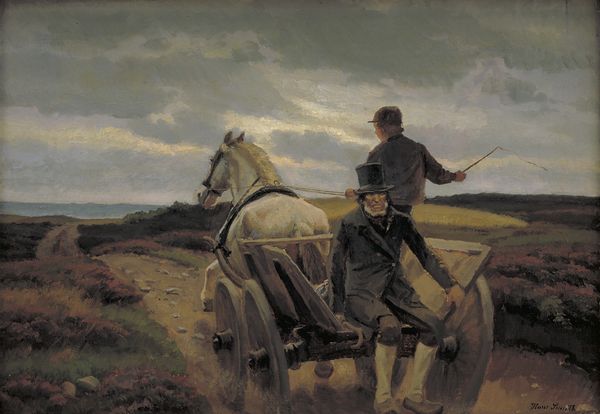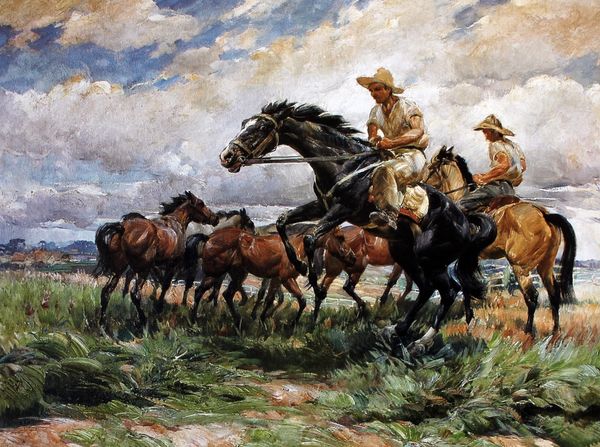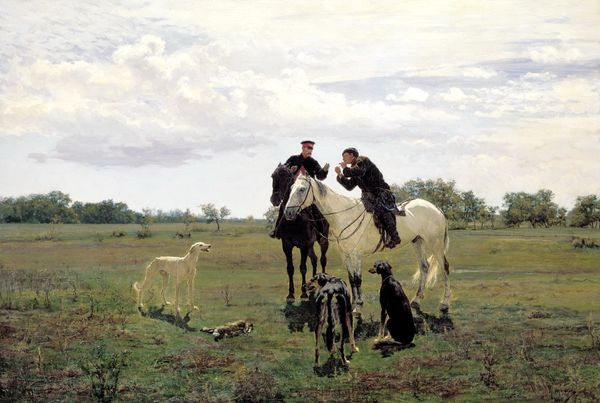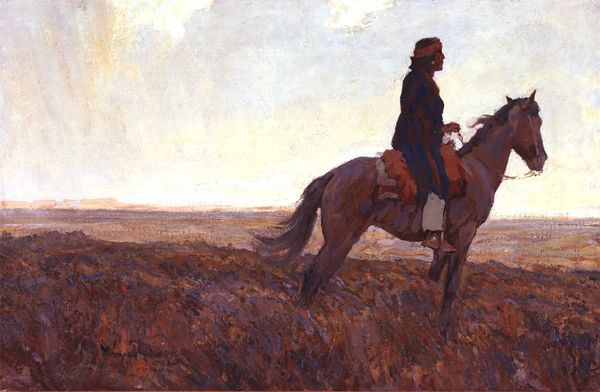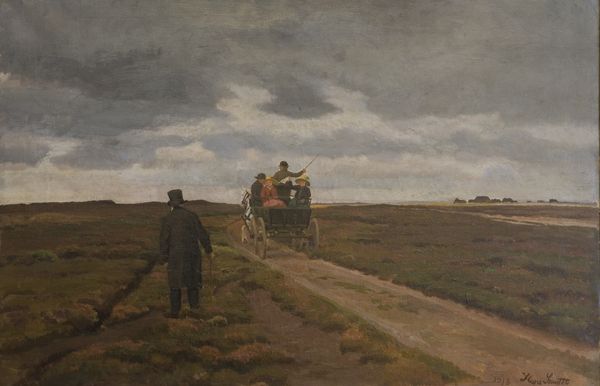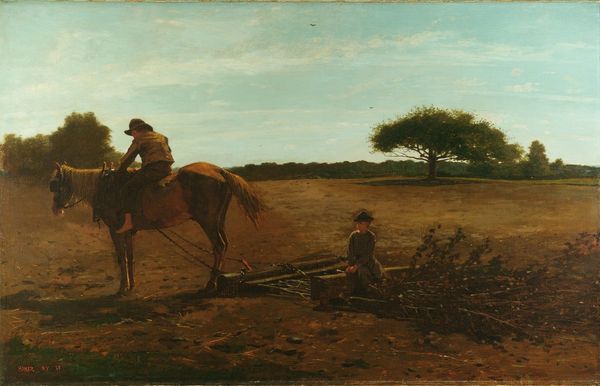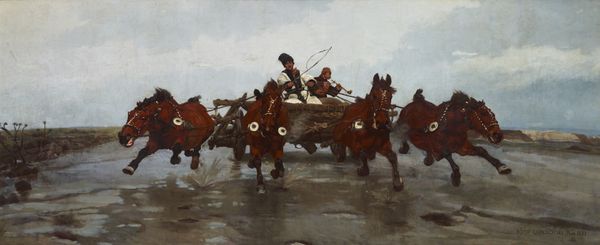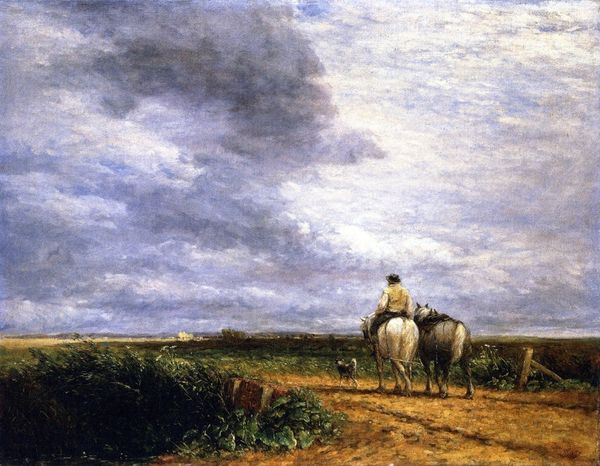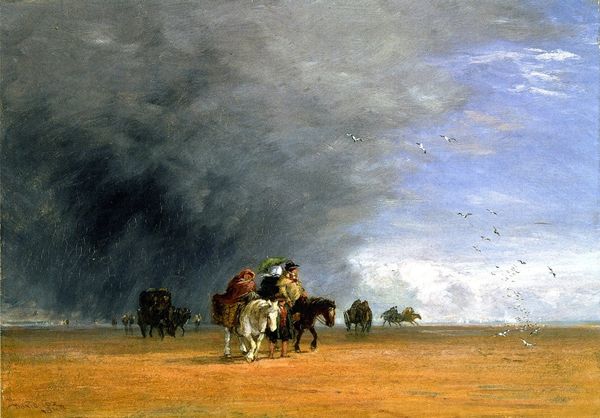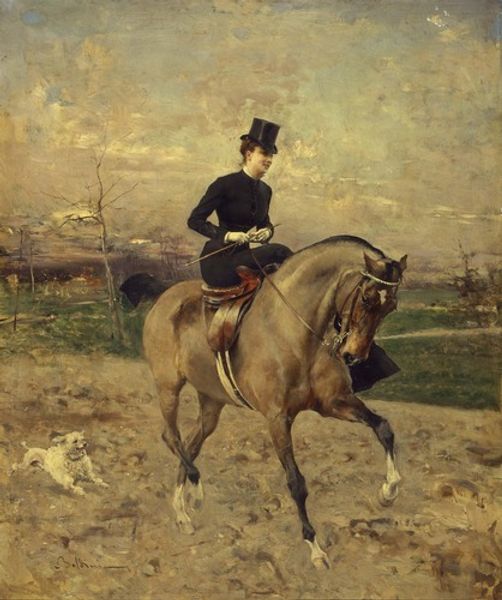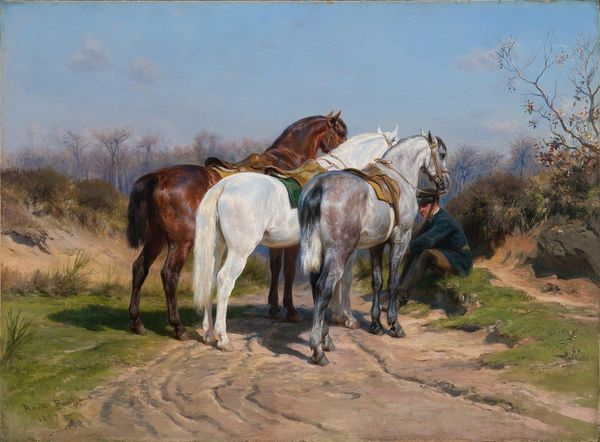
Copyright: Public Domain: Artvee
Curator: Okay, let's talk about Ernest Meissonier's "Le Voyageur," painted in 1886 with oil on canvas. What strikes you most when you look at this painting? Editor: I'm struck by the dramatic, almost windswept feeling. The way the rider's cloak is billowing and the sky looks so heavy gives it a real sense of movement. What do you see in it? Curator: As a materialist, I'm drawn to how the piece reflects 19th-century modes of artistic production and reception. Consider the meticulous detail, almost photographic. How does that connect to the emerging industrial era and the rise of the bourgeoisie who were consuming these images? Editor: I hadn’t thought about it in terms of industrialisation! The detail feels almost… academic, in a way. Does that fit with the social context of art production at the time? Curator: Absolutely. Meissonier aimed to meticulously recreate reality, investing enormous labour into his work. It wasn’t just about representing a scene, but also about displaying technical skill, which appealed to a specific market interested in skill and high art. Editor: So, it’s less about the rider or the journey and more about the _making_ of the image? The craftsmanship itself becomes a kind of commodity? Curator: Precisely. We should think about who had the means to commission, collect, and circulate these images, and what that tells us about the values and power dynamics inherent in the art world. What happens when the artistic process becomes part of a broader market dynamic? Editor: I see. So, considering this work from a materialist perspective has really shifted how I understand its meaning and its context within 19th-century society. It's less about a romanticized journey and more about the art world machine itself. Curator: Exactly, and the power structures that influence that creation. Now, think about how the rise of photography impacted that material art world!
Comments
No comments
Be the first to comment and join the conversation on the ultimate creative platform.
